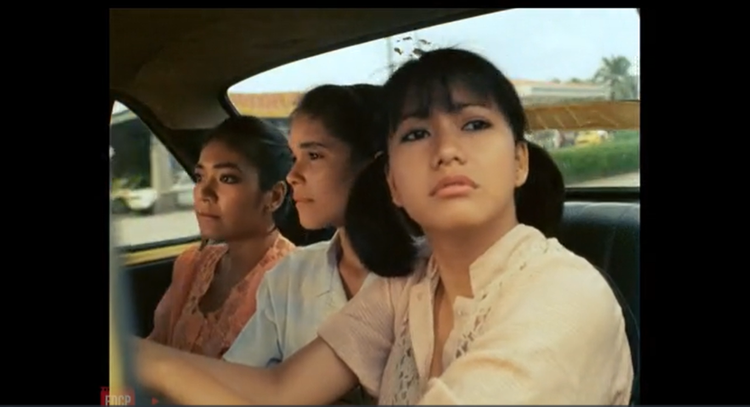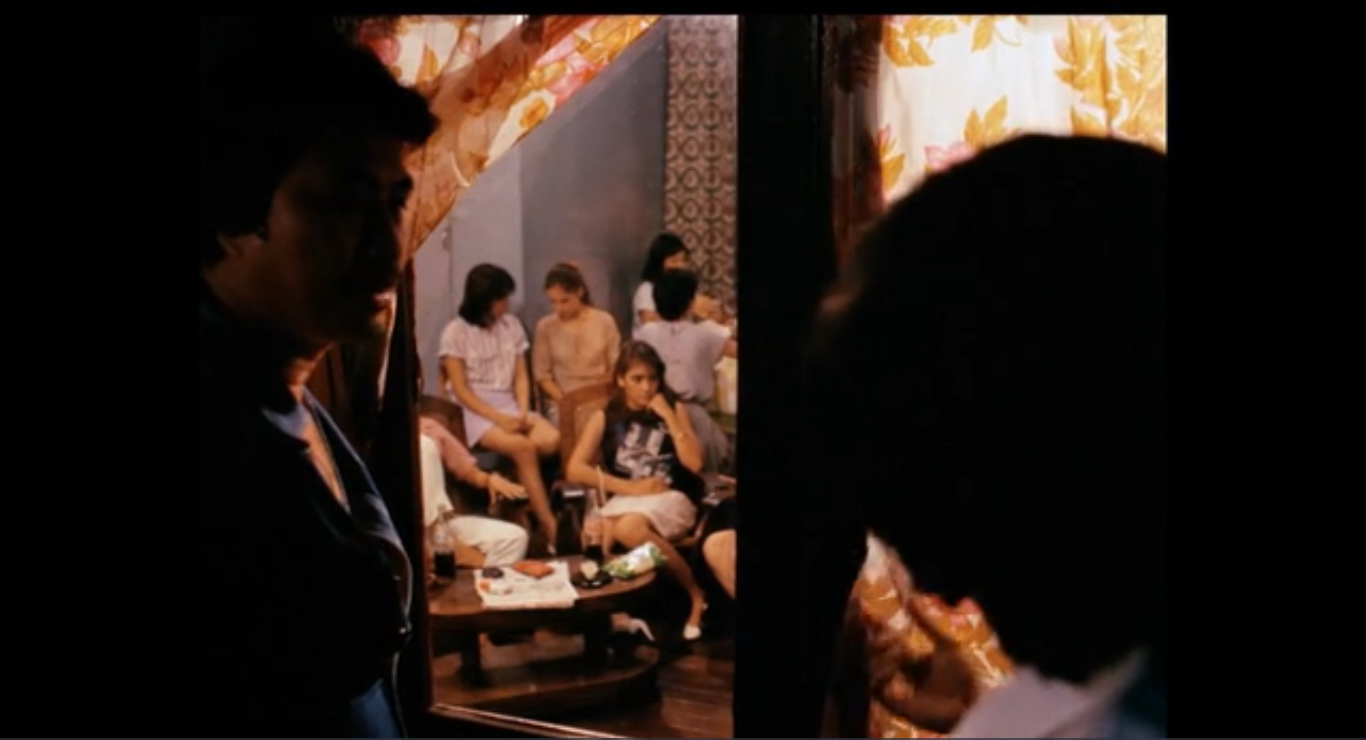By: CZERIZHA KAIZEL S. ADZUARA
Editor’s Note: This film review is part of a review series featuring the restored classic Filipino films available for free in FDCP Channel’s Pamanang Pelikula in celebration of this year’s Philippine Film Industry Month.

IN a poverty-stricken country like the Philippines, employment opportunities become hard to refuse. The desperation for money drives them to seek labor regardless of the cost, in order to live and to survive. Nevertheless, this enables workers to be vulnerable to exploitation and abuse.
White Slavery is among the restored classic films screening for free at FDCP Channel to celebrate the 2021 Philippine Film Industry Month. Directed by Lino Brocka and written by Ricardo “Ricky” Lee, the film tackles the rampant sex trafficking in the country and its destructive consequences to its subjects.
Inclined to support their families, Joy (Sarsi Emmanuel), Pinang (Emily Loren), and Linet (Jacyln Jose) left the province to work as waitresses under the care of Mrs. Atiporda (Tita De Villa) in Pasay. As they enter Mrs. Antiporda’s roof, they are suppressed from leaving the house under the hostess’ rules and her assistant, Bigote (Jimmy Santos).
The three protagonists are assigned with their respective work. Pinang works as a waitress at a resto-motel, and sometimes secretly meets with her lover, Rodel (Patrick Dela Rosa). Joy serves as a dancer at Mrs. Antiporda’s bar; and later on, works with Allan (Ricky Davao). While Linet, the youngest among the three, stays at home. Which in fact, is a sex den.
Their expectations of metropolitan life gradually turn upside down upon realizing that their hostess intends to sexually commodify their bodies. After several weeks under their predicament, Joy, Pinang, and Linet eventually succumb to Mrs. Antiporda’s subjugation as they receive their sufficient pay.
With the film’s myriad of explicit, violent, and rape content, the audience faces discomfort as the main characters are evidently subjected to sexual exploitation and abuse. White Slavery also exhibits the situation of the country’s poverty in the 80s and the eagerness of Filipinos to slave away from it.

Additionally, the film was able to utilize various melodies in manipulating the atmosphere of scenes. The song “Like a Virgin” by Madonna is among its soundtrack. This factor obscures certain explicit and disturbing content, making rape scenes look and sound acceptable. The soundtrack also perpetuates the overly shown sexual segments in the film.
Moreover, Sarsi Emannuel, Emily Loren, and Jaclyn Jose have given justice to the three characters’ plight. Every scene that depicts the repercussions of exploitation and abuse is performed with their acting skills. However, unnecessary sexual segments become excessive and conspicuous throughout the narrative. These parts take too much of the film’s time and only provide a momentary and inadequate denouement for the plot. This manifests the film’s failure to subvert the issue that is meant to address, while excessively allocating uncensored scenes to satisfy the male gaze.
Above all, the showcasing of issues and taboos in the Philippines—which are still relevant in modern-day society—is Lino Brocka’s imprint in the Filipino film industry. White Slavery successfully administers to discomfort its audience with the issue at hand, which signifies that art truly disturbs the comfortable. F



